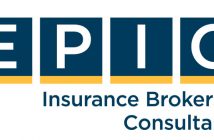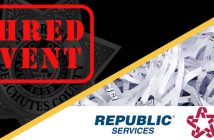The pandemic crisis keeps challenging the eCommerce sector with chargeback being one of the most frustrating things for any merchant. Of course, returns are inevitable for almost any business, but chargeback prevention is, fortunately, implementable for your company. This brief guide by covery.ai risk managers will help you with that.
What Is a Chargeback?
A chargeback is a forced reversal of payment and can be initiated by the cardholder’s bank in order to provide protection from a dishonest merchant. Unfortunately, many customers confuse chargebacks with average refunds and use them to get refunds even if they don’t suspect the merchant in being dishonest.
The difference between a traditional refund and a chargeback is that a customer doesn’t contact the merchant to get the money back. Instead, he or she contacts the bank and asks it to initiate a forceable refund. If the bank fulfills the request, you lose the amount paid by the customer, who isn’t obliged to return the purchased goods even if it’s in your refund policy. In addition, you have to pay the fee for the entire operation. The worst thing is that a chargeback occurs unexpectedly in 99% of cases.
On the one hand, this procedure protects customers from a variety of fraudulent schemes and lets them return the money quite quickly. On the other hand, cardholders are not restricted in the use of chargeback and may apply their right for such a refund type anytime. This leads to the actual robbing of honest merchants if a customer doesn’t use the offered refund policy first. By robbing, we mean getting the product for free. Moreover, the seller (you) loses the markup, because chargebacks withdraw the full price!
Fighting the Chargeback
Even a single chargeback can be a huge problem, so let’s learn how to minimize the chances to be legally ripped off. Here are 5 most effective methods to use in 2021:
- Post a clear return policy – your written return policy must be clear but precise. Make sure to state how your customer can process a return. That’s where you can list the cases when a customer has the logical rights to use the chargeback.
- Describe products in detail – the clear description of your product minimizes the chance that a customer will recall the charge after some time. If the description is vague, your customers have the right to say that they don’t remember purchasing it, which can be recognized as a fraud attempt by the bank. Be as clear and transparent as possible.
- Keep records – you should archive and organize all the records related to the history of purchases, shipment, and any other documentable operations. Make sure to keep the chain of custody records to be able to track all the steps each product makes before it reaches the customer. This will boost your ability to dispute chargebacks and keep more of your earnings in case of a chargeback request.
- Establish and follow protocols – you should always have a credit card fraud prevention protocol. The payment processing company must set your guidelines for confirming signatures, checking CVVs, and card-not-present payments confirmation. These are the security measures that you MUST utilize.
- Implement proactive fraud detection – you should invest in a service that has a high rank in detecting fraudulent activity, such as Visa Merchant Purchase Inquiry or Covery.ai risk management experts. There are options for any budget.
Not Perfect But Effective
Unfortunately, there’s no cure-all anti-chargeback method, but these 5 are the must-haves that can significantly reduce the number of successful chargebacks during the financial year. Customers have the big right to be protected against fraud, but merchants have the same right to protect themselves from unjustified chargebacks!





